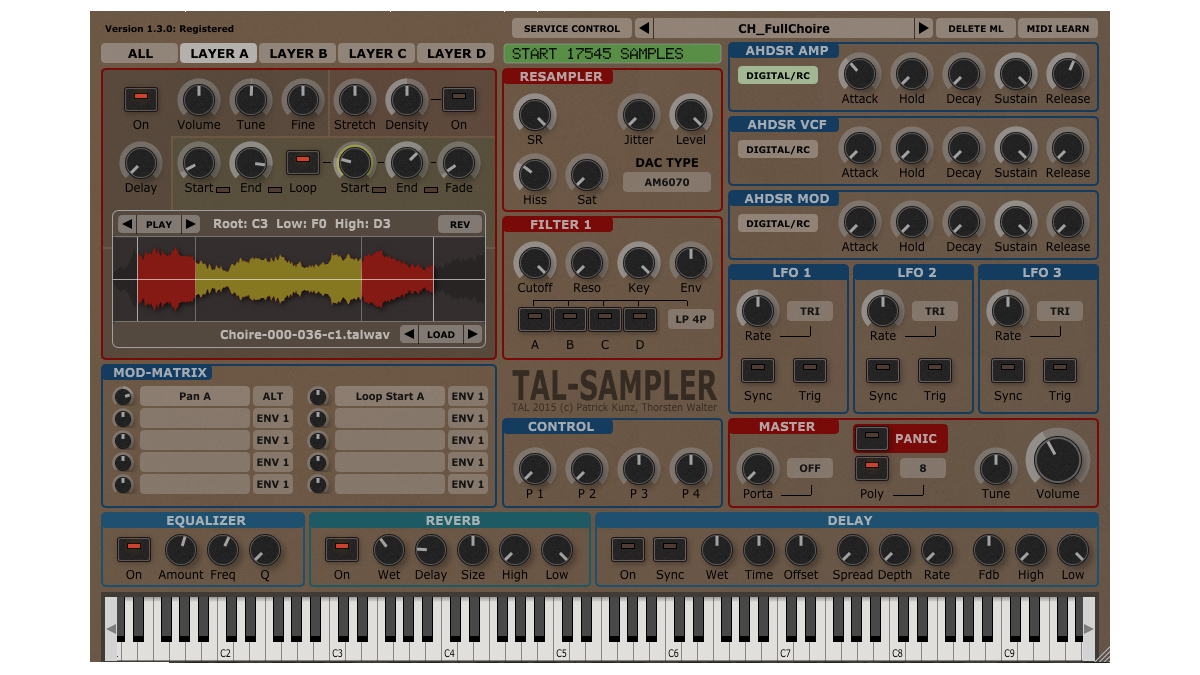TAL-Sampler plugin goes back to the old school
Vintage DAC modes emulate classic hardware

It might be called TAL-Sampler, but Togu Audio Line's latest plugin is not just a software sampler player. In fact, according to the developer it's a full-featured analogue-modelled synth that uses a sample engine as a sound source and also provides a mod matrix and self-oscillating 24/12/6 dB low-pass filter.
Having said that, TAL-Sampler doesn't come with multi-gigabyte library. It harks back to the early days of sampling, when just small snippets of audio were used, and the focus is on fast loading times and an intuitive workflow.
In keeping with this old-school philosophy, you can choose from different DACs to emulate the sound of different hardware samplers.
TAL-Sampler has a 4-layer architecture and can import sounds via drag-n-drop in all the expected audio formats. A feature list is below, and you can find out more on the Togu Audio Line website. The plugin is available in VST/AU/AAX formats for 32/64-bit hosts and currently costs $45.
TAL-Sampler features
- Vintage DAC modes (Emu II, AM6070, Sample Hold).
- Steep 96dB low-pass reconstruction filter (Emu II and AM6070 F)
- Variable sample rate
- Powerful MOD-Matrix.
- Four sample layers
- Three AHDSR envelopes with vintage Digital / RC mode
- Three LFO's (Triangle, Saw, Rectangle, Random, Noise)
- High Quality effects (Reverb, EQ, Delay)
- Self resonating zero feedback delay filter (24/12/6 dB LP)
- Wide range of audio formats supported (*.wav, *.aiff, *.aif, *.mp3, *.ogg, *.flac)
- Scalable high resolution user interface
- The possibility to change font and background colour
- Fast sample and preset loading
- More than 100 presets available as download
Want all the hottest music and gear news, reviews, deals, features and more, direct to your inbox? Sign up here.



I’m the Deputy Editor of MusicRadar, having worked on the site since its launch in 2007. I previously spent eight years working on our sister magazine, Computer Music. I’ve been playing the piano, gigging in bands and failing to finish tracks at home for more than 30 years, 24 of which I’ve also spent writing about music and the ever-changing technology used to make it.